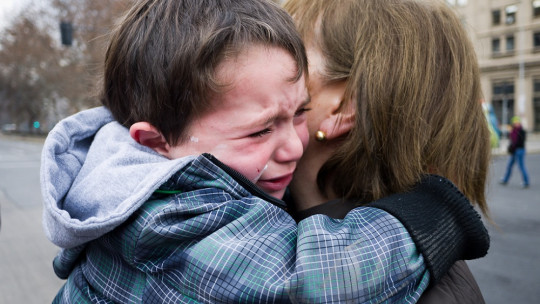
In recent decades, many important changes have arisen in society, and the family is no exception. Since 1975, Divorce figures have doubled, causing an increase in single-parent households Something that, just a few years ago, was not socially accepted.
Nowadays, however, the phenomenon of divorce is quite common. According to the Business Insider portal, which created a graphic map showing the divorce rates of different countries in the world, Spain occupies fifth place with 61% of couple breakups.
The importance of the family in the development of children and young people
The family is extremely important in the development of children, since it is, possibly, the socializing agent that will most influence their growth In fact, children need adults for a long period of time, which has caused all societies to organize around groups of people that we generally know as “the family.”
But with the changes that have been happening in recent years regarding family structures, the little ones have sometimes had to live in family environments that are not always ideal. Families educate their children, and their primary objective should be to provide them with a solid foundation so that they can face the future with the best possible guarantees. In other words, families must help them learn to be respectful of others, have a strong and resilient personality or acquire emotional and economic security, in short, prepare them for a successful adult life. Unfortunately, this does not always happen this way.
Toxic or pathological families
The importance of the family in the emotional well-being of its members has been of scientific interest during recent decades. Not only because of the genetic origin of some pathologies such as schizophrenia, but because of the importance of the environment and the influence of family structures on mental disorders.
In the field of mental health, there is increasing awareness of how family difficulties affect its members, so it is necessary for them to face their difficulties in the best possible way. In this sense, what differentiates a dysfunctional family from a functional one is not the presence or absence of problems, but what is important is the use of recurring interaction patterns that hinder the social and psychological development of its members and affects their adaptation and conflict resolution.
Stability and change in the family
As mentioned, the normal family, if this concept makes sense, it is not free of difficulties or problems, which forces us to rely on a conceptual scheme of family functioning in order to understand its dysfunctionality. The normal family is constantly functioning effectively, and despite difficulties is able to transform, adapt, and restructure itself over time to continue functioning.
It is important to differentiate the dysfunctional family from the poor family. The latter is characterized by the difficulties of satisfying economic resources. From the outset, Poor families do not have to be dysfunctional However, scientific research has provided data that states that families with limited economic resources may have difficulties when carrying out different family functions. For example, the education or emotional and relational development of their children.
Types of families that exist
Since the family is part of society, it is a structure that can and does change over time. Family structure does not indicate whether a family is functional or not, but simply has to do with its shape and the members that make it up. Something that has a lot to do with the historical, economic and cultural context.
This variety of forms include the following.
1. Nuclear family (two-parent)
The nuclear family It is what we know as a typical family, that is, the family made up of a father, a mother and their children. Societies generally encourage their members to form this type of family.
2. Single parent family
The single parent family It consists of only one of the parents taking charge of the family unit, and, therefore, raising the children. It is usually the mother who stays with the children, although there are also cases in which the children stay with the father. When only one of the parents takes care of the family, it can become a very big burden, which is why they usually require help from other close relatives, such as the children’s grandparents. The causes of the formation of this type of family may be divorce, being a premature mother, widowhood, etc.
3. Adoptive family
This type of family, adoptive family, refers to parents who adopt a child. Although they are not biological parents, they can play a great role as educators, equivalent to that of biological parents in all aspects.
4. Family without children
These types of families, families without children, are characterized by not having descendants. Sometimes, the parents’ inability to procreate leads them to adopt a child. In any case, we can perfectly imagine a family unit in which, for one reason or another, we have not wanted or been able to have children. We must not forget that what defines a family is not the presence or absence of children.
5. Family of separated parents
In this type of family, which we can call separated parents family, the parents have separated after a crisis in their relationship. Even though they refuse to live together, they must continue to fulfill their duties as parents. Unlike single parents, in which one of the parents carries the entire burden of raising the child on her shoulders, separated parents share functions, although the mother is, in most cases, the one who lives with The son.
6. Blended family
This family, the blended family, is characterized by being composed of several nuclear families. The most common cause is that other families have been formed after the breakup of the couple, and the son, in addition to living with his mother and her partner, also has his father’s family and his partner, and may have stepsiblings. .
This is a type of family more common in rural environments than in urban ones, especially in contexts where there is poverty.
7. Homoparental family
This type of family, homoparental family, is characterized by having two homosexual fathers (or mothers) who adopt a child. There can also be homoparental families made up of two mothers, obviously. Although this possibility raises a broad social debate, studies have shown that children of homoparental fathers or mothers have normal psychological and emotional development, as this APA report explains, for example.
8. Extended family
This type of family, extended family, is characterized because the raising of children is in charge of different relatives or several family members (parents, cousins, grandparents, etc.) live in the same house. If you have ever seen the famous series “The Fresh Prince of Bel Air”, you can see how Will lives in his uncle’s house, who takes on the role of his uncle’s father. It may also happen that one of the children has his own child and they all live under the same roof.








